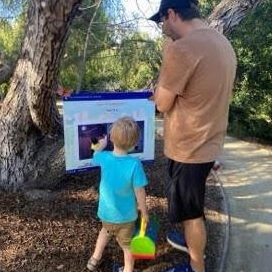The Society’s long history of convening the science community and promoting science in our state has contributed to a burgeoning archive deposited with the State Library of Victoria, who provide public access to these for the benefit of researchers. Meanwhile, we still maintain quite a few curious documents and objects from our past, squirrelled away in various shelves, cabinets and cupboards, our small archive room and the squeezy spaces beneath the raked seating of the Ellery Theatre. One such object is this mysterious portrait from the mid-20th century, painted in 1961 by Orlando Dutton, depicting a scholar, his medals and a microscope, without any name provided.
An iconic species of the Australian Alps, the mountain pygmy possum (Burramys parvus) is found in a unique and fragile habitat that is highly sensitive to environmental change. Habitat conservation and genetic rescue-based conservation efforts have allowed some populations to rebound, but the possum is facing new threats, and the species remains Critically Endangered on the IUCN Red List of Threatened Species. The Bogong moth, a key food source in the mountain pygmy possum diet, has declined in recent years. Efforts to understand Bogong moth biology are underway.
The kingdom of fungi is an important, though often underappreciated, family of organisms which include yeasts, rusts, moulds, smuts, mildews, stinkhorns and mushrooms. Of the vast range of living things on the Earth, fungi make up an impressive 9% of all biodiversity. The immensity of the mighty fungi kingdom and the diversity of fungal organisms and functions means we can’t fit everything into a brief exploration; however, mycologist Dr Sapphire McMullan-Fisher gave us some comprehensive insights to the mysterious world of fungi to share.
Dark energy makes up approximately 68% of the Universe and dark matter makes up another 27%. Despite their dominance in the Universe, we are still not sure what they actually are. Alan Duffy investigates how dark matter helps galaxies form and keeps them intact. He uses supercomputers to simulate this process. But the more we learn about the visible parts of the Universe, the bigger the gap becomes between what we predict about the unknown and what we see. He and other astrophysicists are constantly under pressure to gain a better understanding and provide explanations of how dark matter and dark energy are present all around us.
In his leadership of CLEx, Professor Andy Pitman convenes scientists from institutions across the nation. Andy has conducted extensive climate science research on land surface models, looking at the impact of terrestrial changes in Australia’s climate and the moderation of climate extremes, producing 99 papers of exceptional quality and impact in the ten years up to 2018. He has led two ARC Centres of Excellence with extensive participation in key international, national and government committees. He is an outstanding scientist, and a significant science leader.






